- Composable Commerce, Technology & Platforms
Client Huisman

Composable means – as the name suggests – a modular architecture of software components. All components are developed independently and can easily be combined. This way, you can create a complex application with different building blocks, without the need for a full Suite solution. Sounds appealing right? But how do you get started on a Composable architecture for your company? The first step is to create a Composable blueprint. In doing so, you identify the specific needs of your business and see what functionalities are needed to meet them.
When comparing Suites with a Composable solution, one isn’t better than the other. Depending on your company’s specific needs, it is best to choose one, the other or a combination of both. A Suite solution certainly has advantages. It provides seamless integration between the various applications of your software package, making it easy to manage them centrally. On the other hand, you often have redundant functions for your company, a vendor lock-in and limited freedom of choice in functionalities. One of the major advantages of a Composable solution is its flexibility. You select the functionalities depending on the needs for your e-commerce. Because you only pay for what you need, it is a budget-friendly solution. Plus, you are no longer dependent on suppliers.
Often, it is also a good option to combine both systems. It is not always easy to change software systems within a company. Often, the original software solution is used as a foundation on which plenty of other applications are built. You cannot – and should not – simply take away that foundation. You can, however, attach Composable functionalities to it, so that you can phase out the original software solution piece by piece.
Composable

Suite

Composable + suite

A ‘foundationsfirst’ approach is the key to a successful software architecture. You must first properly understand (the vulnerabilities of) your ecosystem before you can start optimising.
Some crucial questions you should answer first. What happens if I replace the ERP system? What was originally developed? What components were built on it? Who knows the code base? Is the code up-to-date? How many dependencies does your system have? How agile is your business?
It’s no easy task to identify the foundations of your systems. But it is a necessary exercise if you want your architecture to evolve with your business. And it definitely will be an evolution: you are future-proofing your systems by letting them grow along with your business needs.


Discover the potential and future possibilities of your systems with a Composable blueprint. We will first look at your business goals before recommending an optimal solution. Maybe a Suite solution is sufficient for your company, or you might be better off with modular components. A thorough analysis is crucial for optimising your systems.
We can also start by calculating your Agile Maturity score, with which we evaluate how agile your company is. We will identify the strengths and weaknesses of your business. After, we’ll advise you on how to transform your company and make it more agile towards the future.
Business Park King Square
Veldkant 33A
2550 Kontich
Belgium
Kontich
Aalst
Leuven
Hasselt
Merelbeke
Amsterdam
Utrecht
Valencia